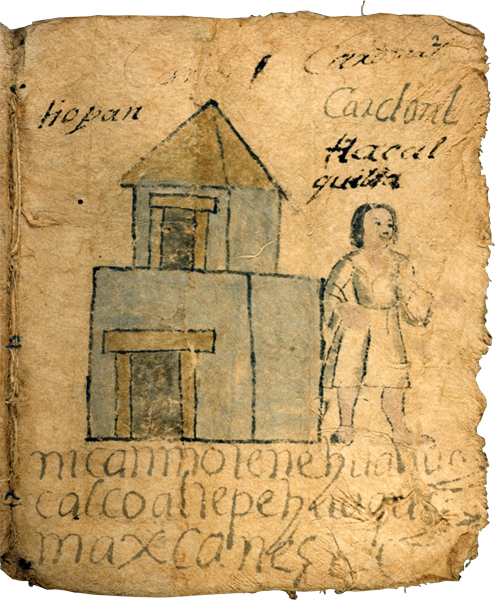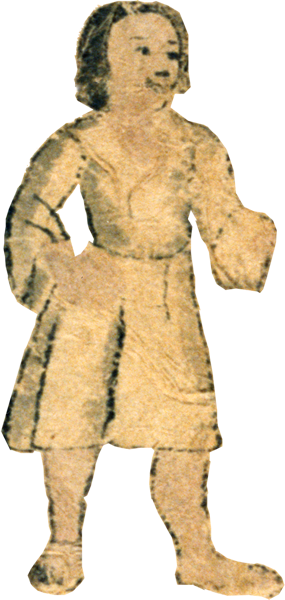Bk. IV, f. 2r., indigenous man standing (colonial attire)
This is a detail of an indigenous male who represents a leader in the town, possibly a church official appearing in Book IV, folio 2 recto. He is dressed in white-cotton colonial dress (a long-sleeve tunic and knee-length pants). The man may be gesturing with his left hand, although neither hand is visible any longer (the paint has possibly worn off). His hair is black and falls not quite to his shoulders. He is standing near but facing away from the church. It is noteworthy that the man is nearly as tall as the church, showing that a strict observance of the scale of the natural world was not a high priority for the painter(s). [SW]
un hombre indígena de pie (era colonial)
Este es un detalle de un hombre indígena que representa a un lider de la ciudad, posiblemente miembro del clérigo. Su vestimenta está compuesta por un vestido colonial de algodón blanco (una camisa mangas largas y unos pantalones hasta la rodilla). El hombre parece estar gesticulando con su mano izquierda, aunque ninguna de sus manos sigue estando visible (la pintura se ha decolorado). Tiene el pelo negro, casi a la altura de los hombros. Está parado enfrente de la iglesia, dándole la espalda. Es importante destacar que el hombre es casi tan alto como la iglesia, denotando la falta de importancia para el artista de las proporciones del mundo natural.

